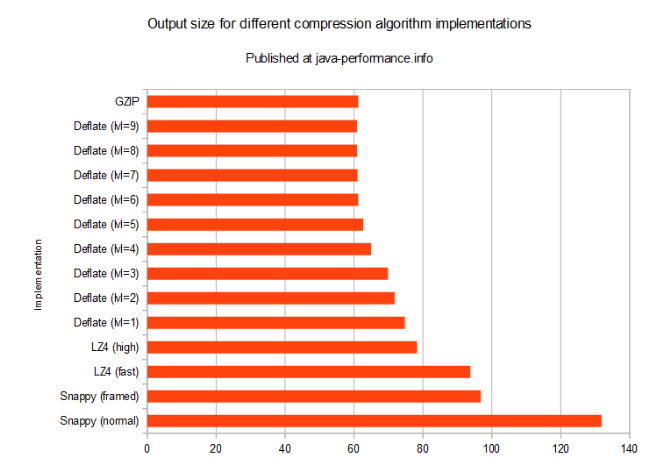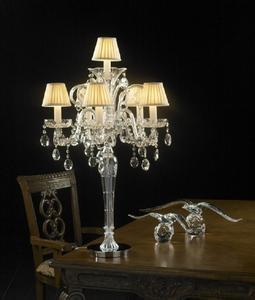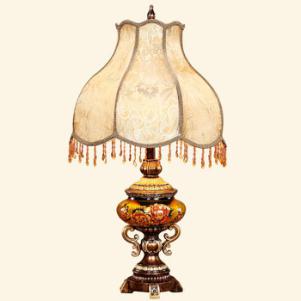The speaker is also called the speaker system, it is an extremely important link in the sound system. Because the sound quality of the speaker has a great impact on the entire sound system. At present, the level of program signal source equipment and power amplifiers has been made very high. Therefore, the sound quality of an audio system composed of high-quality sound sources, high-quality amplifiers and speaker systems depends mainly on the speakers.
First, the type of speaker
There are many classification methods for speakers, and the common classifications in professional audio are as follows:
1. According to the occasion of use: it is divided into two categories: professional speakers and home speakers. Household speakers are generally used for home playback. They are characterized by delicate and soft playback quality, exquisite appearance, beautiful appearance, low sound pressure level, and relatively little power. Professional speakers are generally used in professional entertainment venues such as dance halls, karaoke halls, theaters, auditoriums and stadiums. General professional speakers have high sensitivity, high sound pressure, good strength, and high power. Compared with home speakers, their sound quality is hard and the appearance is not very delicate. However, the performance of monitor speakers in professional speakers is close to that of home speakers, and their appearance is generally more exquisite and compact, so this type of monitor speakers are also often used by home Hi-Fi audio systems.
2. According to the audio frequency: it can be divided into full-band speakers` bass speakers and subwoofer speakers. The so-called full-band speaker refers to the sound that can cover the low frequency` intermediate frequency and high frequency range. The lower limit frequency of full-band speakers is generally 30Hz-60Hz, and the upper limit frequency is 15KHz-20KHz. In a general small and medium-sized audio system, only one pair or two pairs of full-band speakers can be fully responsible for the playback task. Bass speakers and subwoofers are generally dedicated speakers used to supplement the low-frequency and ultra-low-frequency playback of full-band speakers. This type of speaker is generally used in large and medium-sized sound systems to enhance the strength and shock of low-frequency playback. When in use, most of them are divided by an electronic crossover (crossover), and the low frequency signal is sent to a special bass amplifier, and then the bass or subwoofer speakers are pushed.
3. Divided by use: generally can be divided into main speakers. Monitor speakers and back listening speakers, etc. The main speaker is generally used as the main speaker of the sound system, and is responsible for the main playback tasks. The performance of the main speaker has a great influence on the sound quality of the entire sound system. You can also use a full-band speaker plus a subwoofer to perform a combined sound.
The monitor speakers are used for program monitoring in the control room and the recording room. It has the characteristics of low distortion, wide and straight frequency response, and few modifications to the signal. Therefore, it can best reproduce the original appearance of the program. Back listening speakers, also known as stage monitor speakers, are generally used on stage or dance halls for actors or band members to monitor their singing or performance sounds. This is because they are located behind the main speakers on the stage, they can not hear their own sound or the sound of the band playing, so they can not cooperate well or find the feeling is inaccurate, which seriously affects the performance of the performance. Generally, the listening speakers are made into a bevel shape and placed on the ground, so that they can be placed on the stage without affecting the overall shape of the stage, and can be clearly heard by the people on the stage when playing, or caused by the feedback of the sound to the microphone. Howling. 4. According to the cabinet structure: it can be divided into sealed speakers, inverted speakers, labyrinth speakers, acoustic tube speakers and multi-cavity resonant speakers. Among them, the most used in professional speakers are inverted speakers, which are characterized by wide frequency response, high efficiency and large sound pressure, which are in line with the type of professional audio system speakers, but because of their low efficiency, they are less in professional speakers. Application, mainly used in home speakers, only a few monitor speakers adopt closed box structure. The sealed sound box has the advantages of simple design and debugging, wide frequency response and good low-frequency transient characteristics, but it has higher requirements for the dialer unit. At present, in all kinds of speakers, inverting speakers and sealed speakers account for most of the proportion, other types of speakers have many structural forms, but the proportion is very small.
Second, the performance index of the speaker system
1) Frequency response (effective frequency range)
This indicator reflects the main frequency range of speaker operation. When a constant voltage signal source is applied to the speaker and the frequency of the signal source is changed from low frequency to high frequency, the sound pressure generated by the speaker will change with the change of frequency. The resulting sound pressure-frequency curve is the frequency response curve of the speaker. IEC (International Electrotechnical Commission) stipulates the frequency limit of the sound that can be reproduced by the speaker, that is, the effective frequency range, which is the frequency range in which the average sound pressure level of a octave near the peak in the sound pressure frequency characteristic curve of the speaker is reduced by 10dB. The wider the range, the better the sound characteristics. Generally, the minimum required frequency response of a speaker box for high-fidelity is 50-12500HZ (+ 4 ~ -8dB), and it can be sufficient to reach 50-16000Hz. Of course 30-20000Hz is better.
2) Rated impedance It refers to the impedance value measured at the input end of the speaker at a certain operating frequency (intermediate frequency). It is usually indicated on the product trademark nameplate and given by the manufacturer. The impedance characteristics of the speaker. The rated impedance given by the manufacturer is usually the impedance modulus value at which the maximum work can be expected in the rated frequency range. The rated impedance generally stipulates 4 Euros, 8 Euros, 16 Euros, 32 Euros, etc., and 3 Euros, 6 Euros, etc. are also used abroad.
3) The power of the power speaker is one of the important indicators for selecting and using the speaker. It should be pointed out that the domestic and foreign speaker standards are very different, because the definition of power is different. The nominal power of general speakers is rated power.
Rated power or rated noise power refers to the input power when the speaker can work continuously for a long time without generating abnormal sound. The general test uses pink noise signals, and passes specific filters to test within the rated frequency range. According to the IEC standard, the loudspeaker under test should ensure that no abnormalities are generated during 100 hours of continuous operation. By the way, the American EIA standard stipulates that the test time is 8 hours, and the filter is also different.
The maximum noise power is different from the rated power. It indicates the ability of the loudspeaker to withstand a large input power for a short time. The test time is only a few seconds or a few minutes. Generally, the maximum noise power is 2-4 times the rated power.
4) Sensitivity characteristics Sensitivity refers to the sound pressure level measured at 1m in the axial direction when the speaker is added with a pink noise signal voltage equivalent to 1W power at the rated impedance. The sensitivity and efficiency of the speaker box are two different concepts. The efficiency is the ratio of the output sound power to the input electric power. However, the efficiency of the speaker box with high sensitivity is generally higher.
The sensitivity of a loudspeaker has no decisive effect on sound reproduction, because one can obtain sufficient volume by adjusting the output of the amplifier. However, in speaker production, the sensitivity of the speaker is a worthy parameter. Because in two-way or three-way speakers, each speaker unit is in the frequency band in which it is responsible for playback, and their sensitivities must be basically the same, so that the entire speaker is balanced for high, medium, and bass during playback. Especially for stereo speakers, the units used for the left and right channels must be strictly screened and matched. It is required that the difference of the output sound pressure level of the unit used for the left and right channels should be within plus or minus 1 dB, otherwise it will affect the positioning of the sound image.
For professional speakers, especially in long-distance sound reinforcement (such as large halls, sports halls, etc.), speaker sensitivity is also one of the reference standards that must be paid attention to. This is because to achieve the same level of sound pressure level, the use of higher sensitivity can greatly reduce the power capacity of the rate amplifier. Generally, the sensitivity of professional speakers is above 95dB / mw, even up to 120dB / mw. The sensitivity of home speakers is relatively small, even 92dB / mw is very large.
5) Directivity Directivity is used to describe the ability of a speaker to radiate sound waves to various directions in space. It is generally represented by a curve of sound pressure level varying with the angle of radiation. There are usually two ways to express the directivity: one is to mark the change of the frequency response curve at several angles such as 0 degrees, 30 degrees, and 60 degrees on the speaker frequency response curve. By comparing it with the frequency at 0 degrees, you can See how the sound pressure level changes. This frequency response curve is called the directional frequency curve. The other is expressed in polar coordinates. It uses the position of the speaker as the origin, and draws a directivity graph of certain frequencies with polar coordinates. From it, it can visually see the directivity of certain frequencies. In the Hi-Fi system, it is generally undesirable that the directivity of the speaker (or speaker) is too sharp (narrow). Otherwise, people close to the main axis of the speaker will hear better audio effects, and when they deviate from the main axis, the audio effect will be worse. The range of the sound that allows the entire playback frequency band to be evenly heard is limited. However, the directivity of the loudspeaker is very important for the site of sound reinforcement, because the use of directivity can reduce the feedback effect of the loudspeaker to the microphone, thereby eliminating the howling of the sound reinforcement system. In professional speakers, there are many other ways to express directivity.
The directivity of the speaker is related to the frequency. Generally, low frequency (such as below 300Hz) has no obvious directivity. At high frequencies, due to the short wavelength of sound waves, the directivity will become sharp, so some speakers arrange several high-frequency units in different directions to improve the directivity. Directivity is also related to the caliber of the speaker. When the caliber is large, the directivity is also sharp; the caliber is small, and the directivity is wide.
6) Distortion The distortion of the speaker system includes knocking distortion, intermodulation distortion, and transient intermodulation distortion. The distortion characteristics of the speaker are more likely to cause the characteristics to deteriorate than a single speaker. Usually near the crossover point, distortion is greatly increased due to improper design or debugging. Harmonic distortion mainly occurs at low frequencies, especially around the resonance frequency. The minimum requirement for high-fidelity speakers is that the harmonic distortion is not greater than 2%.
When selecting and using speakers, in addition to understanding the performance indicators of the speakers, subjective listening evaluation is also required. In addition, usually use famous brand speakers of famous manufacturers. At present, for professional speakers, American speakers are particularly famous, such as JBL, EV, BOSE, WES LIVE COMMUNITY (C brand), PEAVEY (Baiwei), EAW, etc. are all famous brand speakers.

Follow WeChat

Download Audiophile APP

Follow the audiophile class
related suggestion
In the field of electronic information technology today, a digital revolution with long-term influence is taking place. Due to digital multimedia information, especially digital video, ...

The emergence of electronic operation and maintenance system provides a comprehensive solution for the operation and maintenance management system of telecom operators. The so-called electronic operation and maintenance system is through electronic ...

To understand LED in depth, you need to understand not only some basic knowledge of LED, but also the performance index of LED, because LED performance index is ...

Because ADC products have much smaller requirements than network products and servers, users and integrators will inevitably have some errors in understanding the key indicators when selecting products ...

